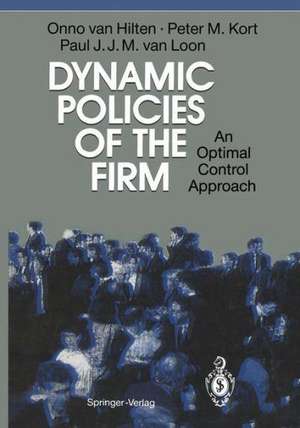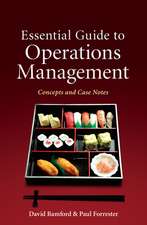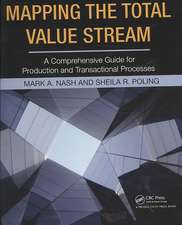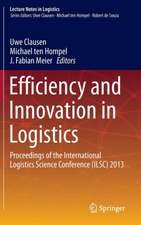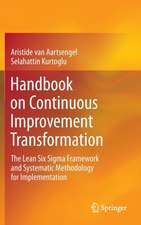Dynamic Policies of the Firm: An Optimal Control Approach
Autor Onno van Hilten, Peter M. Kort, Paul J. J. M. van Loonen Limba Engleză Paperback – 8 dec 2011
Preț: 653.00 lei
Preț vechi: 768.23 lei
-15% Nou
Puncte Express: 980
Preț estimativ în valută:
124.96€ • 133.62$ • 104.18£
124.96€ • 133.62$ • 104.18£
Carte tipărită la comandă
Livrare economică 18 aprilie-02 mai
Preluare comenzi: 021 569.72.76
Specificații
ISBN-13: 9783642778865
ISBN-10: 3642778860
Pagini: 464
Ilustrații: XIII, 445 p.
Dimensiuni: 170 x 242 x 24 mm
Greutate: 0.77 kg
Ediția:Softcover reprint of the original 1st ed. 1993
Editura: Springer Berlin, Heidelberg
Colecția Springer
Locul publicării:Berlin, Heidelberg, Germany
ISBN-10: 3642778860
Pagini: 464
Ilustrații: XIII, 445 p.
Dimensiuni: 170 x 242 x 24 mm
Greutate: 0.77 kg
Ediția:Softcover reprint of the original 1st ed. 1993
Editura: Springer Berlin, Heidelberg
Colecția Springer
Locul publicării:Berlin, Heidelberg, Germany
Public țintă
ResearchCuprins
A. State of the Art.- 1. Introduction.- 2. A Survey of Dynamic Theories of the Firm.- 3. Some Predecessors.- B. Investment and Finance.- 4. A Dynamic Model of the Firm.- 5. Investment and Finance.- C. Production.- 6. Production, Employment, Finance and Investment.- 7. A Further Analysis.- 8. Production, Pollution, Finance and Investment.- D. Dynamic and Risky Environment.- 9. Production, Finance and Investment During a Business Cycle.- 10. Production and Investment with Technological Progress.- 11. Production, Finance and Investment When Demand is Uncertain.- 12. Epilogue.- Appendix 1. An Interpretation of the Maximum Principle.- 1. Introduction.- 2. Technical terms.- 3. The Maximum Principle of Pontryagin.- 4. Mixed control constraints.- 5. Pure state constraints.- 6. Problems with infinite horizon.- Appendix 2. Solutions of the Models of Chapter 3.- 1. Introduction.- 2. A general solution procedure.- 3. The model of Jorgenson.- 4. The model of Gould.- 5. The model of Ludwig.- 6. The model of Lesourne and Leban.- 7. The model (s) of Leban and Lesourne.- 8. The model of Nickell.- 9. Summary.- Appendix 3. Solution of the Model of Chapter 4: A Step by Step Description.- 1. A reduced form of the model.- 2. Optimality conditions.- 3. Infeasible paths.- 4. Feasible paths.- 5. Final paths.- 6. Coupling procedure.- 6.1. Strings ending with path 5.- 6.2. Strings ending with path 4.- 7. Summary.- Appendix 4. Solutions of the Models in Chapters 5, 6 and 8: The Main Lines.- 1. Personal taxation model.- 2. NPV formulas of the model of Chapter 4.- 3. Convex adjustment costs.- 3.1. Optimal trajectories.- 3.2. Net present value formulas.- 3.3. Extension of the planning period.- 3.4. Infinite time horizon.- 4. The model of Chapter 6.- 5. Pollution model.- 5.1. Reformulation of the model.- 5.2. Solution procedure.- Appendix 5. Specific Problems in Solving the Models of Chapters 9 and 10.- 1. Solution of the model of Chapter 9.- 1.1. Optimality conditions.- 1.2. String 1002D2-1.- 1.3. String 1-2-3-2-1.- 2. The Maximum Principle for the model in Chapter 10.- 2.1. The model.- 2.2. The trie.- 2.3. Necessary optimality conditions for a special case.- 2.4. Necessary conditions for the general model.- 3. Existence of steady state solution in Section 10.4.- Appendix 6. Stochastic Dynamic Programming and the Additional Solutions and Mathematical Proofs of Chapter 11.- 1. Stochastic dynamic programming.- 2. Additional solutions and mathematical proofs.- List of Symbols.- References.- Author Index.
